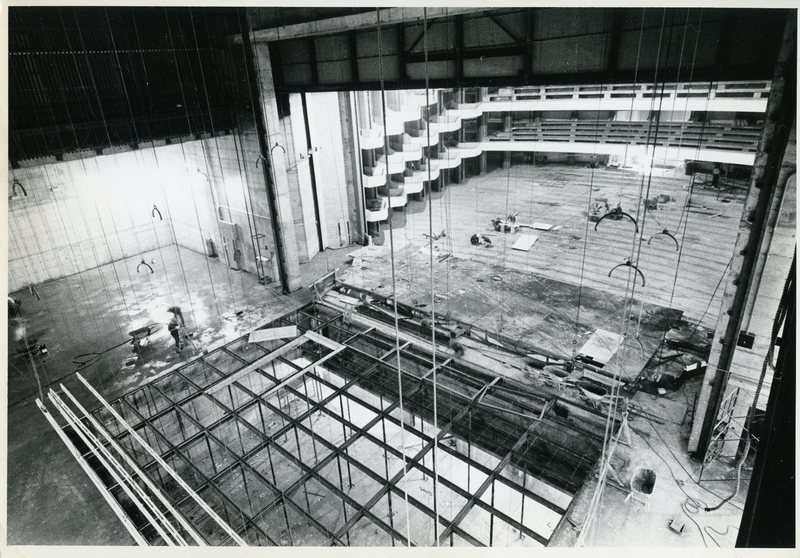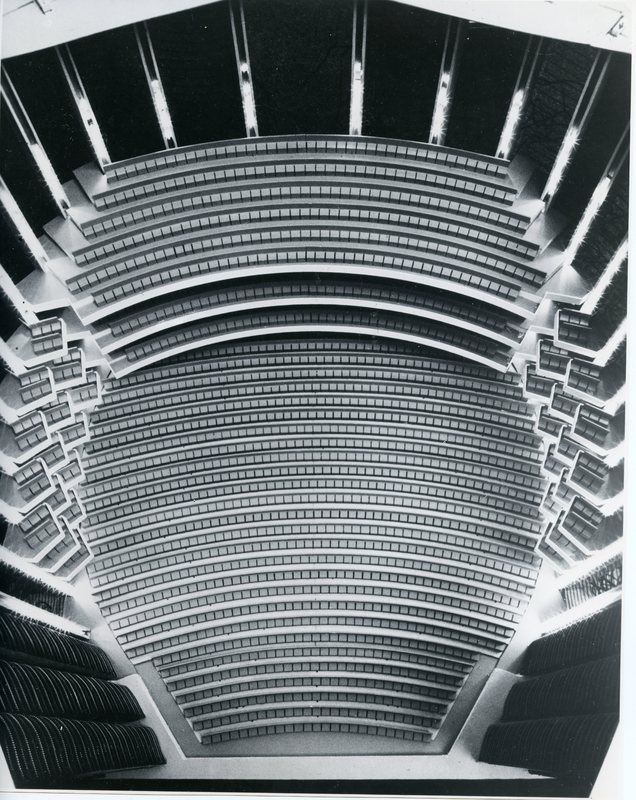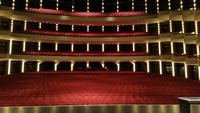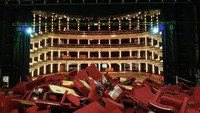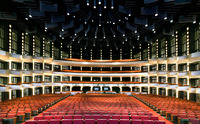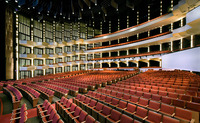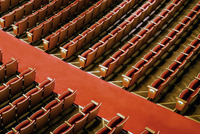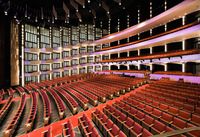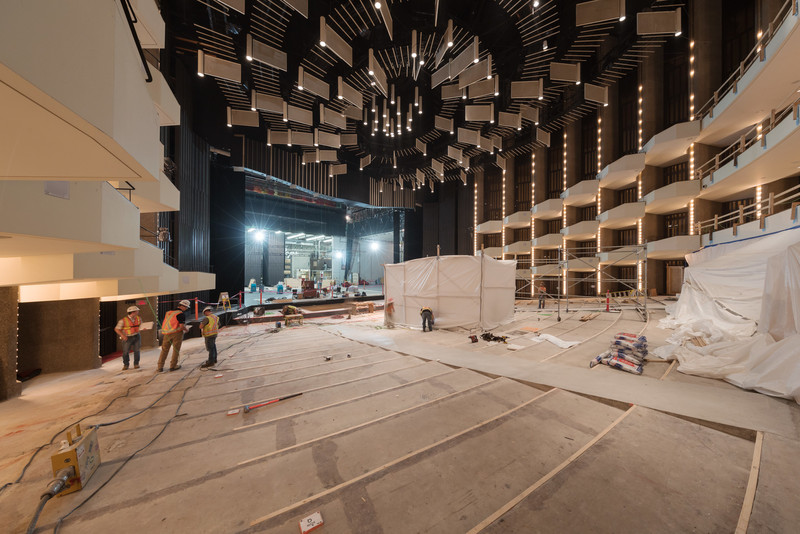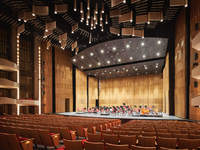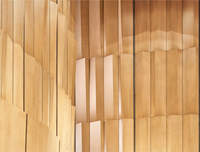Renovations to Southam Hall
In its initial construction, Southam Hall was meant to be a universal venue, suitable for all types of performances from symphonies, to operas, to musical theatre, and ballet. The main reason for this conception was simply that the City of Ottawa did not yet have a venue which could encumber such types of performances. However, this “universal” idea did not come without its issues. In addition to issues with performers being able to hear each other on stage, the shell and materials used throughout the Hall had a negative impact on the acoustic properties during performances, causing the sound to travel up into the ceiling, creating a muddied sound for anyone in the upper balconies. It thus became imperative to upgrade the facilities to improve the balance on stage.
The seating arrangement in the house was yet another nightmare which needed to be addressed. Originally, the Hall featured continental seating, which consisted of a large layout of seating covering the entire floor with no aisles in between the chairs, making it difficult to get to and from one’s seat if they were located in the centre. “For 47 years, patrons coming into the venerable Southam Hall have entered from the wings and climbed over other patrons in a delicate dance to avoid crushing feet” (Robb, Ottawa Citizen).
The new design for Southam Hall’s seating eliminated the continental arrangement to allow centre aisles for easier access. This change brought the seat number to 2,331, cutting about 250 from the original layout. However, the NAC welcomed this change to create a better experience for those viewing a performance.
Changes made to the seating created another opportunity to improve the acoustics of the Hall. The new seating now features wooden backs and wooden bottoms rather than being completely covered in material like they once were.
Acoustic Transformation
It is possible that the original design team of Southam Hall may have been following various trends set by other performance halls. In fact, Hamilton G. Southam wrote in a 1988 Ottawa Citizen editorial: “The day I began working on the project he [Maurice Lamontagne] made the élitist suggestion that we seek a European rather than an American model for it. That is why the NAC resembles a modern German opera house more than it does O’Keefe Centre.”
Diamond Schmitt’s architectural team met with specialists from a Chicago firm, Threshold Acoustics who helped determine what changes needed to be made in Southam Hall. Furthermore, they also met with the Hall’s main conductors, as well as section leads from the orchestra in order to determine how to best reconstruct the acoustic integrity of the room.
The aforementioned shell added to the stage created an entirely new sound for the orchestra. It is made up of various wooden planks, all angled differently. This makes the sound from onstage travel in multiple directions, creating an extremely rich and vibrant final result. Furthermore, performers onstage can now clearly hear virtually every section of the orchestra. The shell is also removeable, and can be broken up into different sections. Plus, there are curtains above the stage which can be lowered in front of the shell. These special features were added to accomodate the needs of any performance being held in Southam Hall.

